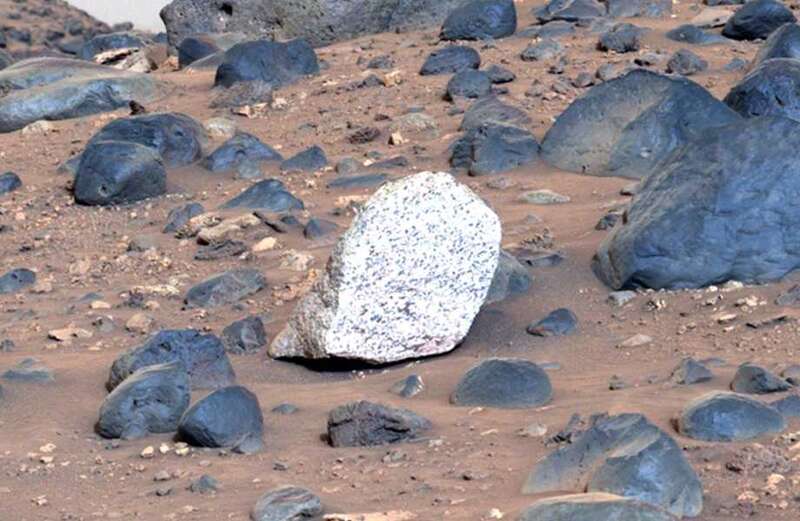A BIZARRE white boulder has been spotted on Mars, and scientists are trying to understand where it came from.
NASA's Perseverance Rover caught a glimpse of the peculiar rock in a photo mosaic taken May 27.

Deep into its fourth science campaign, the rover is searching for evidence of mineral deposits inside Jezero Crater that may provide clues about its history.
With auto-navigation leading the way, Perseverance traversed 656 feet to its first stop at Mount Washburn.
It was at this boulder-covered hill that scientists caught a glimpse of rock they'd never seen before.
 Charming UK village is 'UFO hotspot' with 'NASA scientists showing interest'
Charming UK village is 'UFO hotspot' with 'NASA scientists showing interest'
It was stark white, speckled with darker flecks, and stood some 18 inches wide and 14 inches tall. It also posed a stark contrast to the sea of black boulders surrounding it.
The team dubbed the rock "Atoko Point" after a light-colored cliff in the Grand Canyon.
Brad Garczynski, the co-lead of the current campaign, described the boulders as "a grab bag of geologic gifts brought down from the crater rim and potentially beyond".
"The diversity of textures and compositions at Mount Washburn was an exciting discovery for the team," Garczynski said.
“But among all these different rocks, there was one that really caught our attention.”
Analysis revealed Atoko Point was composed of pyroxene and feldspar, two rock-forming minerals commonly found in basalt.
Taking into consideration its size, shape and the arrangement of its crystals, scientists determined the rock was one of a kind.
It is unclear just how Atoko Point came to be. Some scientists theorize its minerals were produced in a layer of magma below the planet's surface that is possibly exposed now on the crater rim.
Others wonder if the rock had been created outside the crater and was carried there by an ancient current.
The Perseverance team believes Atoko is the first of its kind - but know there's even more to discover.
 Astronomer leads hunt for Northern Lights 'sound' rarely heard in the aurora
Astronomer leads hunt for Northern Lights 'sound' rarely heard in the aurora
The rover departed Mount Washburn and traveled 433 feet north to investigate the geography of a site known as "Tuff Cliff".
It then proceeded to "Bright Angel," an area characterized by pale rocky outcrops.
These may represent ancient rock exposed by water erosion or sediments that once filled the river channel.
Perseverance touched down on Mars in February 2021 and has been exploring Jezero since then. Experts believe the crater was once a lake.


The rover's primary mission is to find signs of ancient life, and it has already gathered two dozen geological samples.
It is currently on the hunt for carbonate and olivine deposits along the crater's rim.
Carbonates are typically found on the surface of Earth's freshwater lakes, forming when carbon dioxide reacts with water.
Scientists hope to gather clues about the historical carbon dioxide levels on Mars, which will allow them to paint a bigger picture about its climate.


































